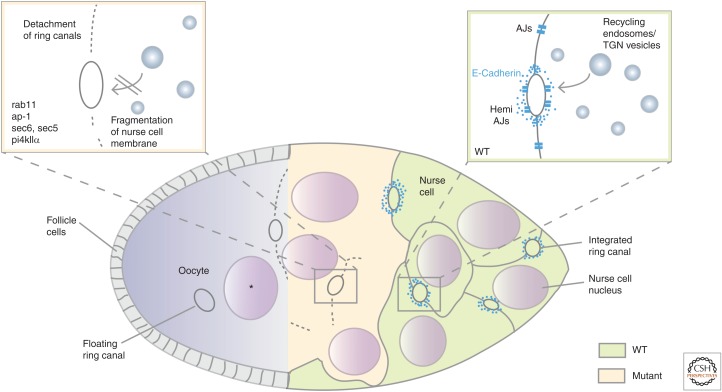Figure 4.
Polarized trafficking of Drosophila E-cadherin is required for the maintenance of ring canal anchoring to plasma membrane. Drosophila eggs arise from individual units called egg chambers consisting of two cell types, the germline cyst and the surrounding somatic monolayered follicle epithelium. The 16-cell germline cyst consists of one oocyte (blue) and 15 nurse cells (green and orange) that provide nutrients for oocyte maturation. Cytoplasmic bridges between nurse cells and the oocyte support the growth of the oocyte. These bridges are formed by F-actin-rich ring canals that allow the directed microtubule-mediated transport of all macromolecules and organelles from the nurse cells into the oocyte. E-cadherin clusters form circular ‘‘hemi-adherens junctions’’ around the ring canals mediating the anchoring of ring canals into the nurse cell membrane. During oocyte maturation, the volume of the oocyte increases by four orders of magnitude resulting in a dramatic increase of plasma membrane tension. A continuous secretory transport of E-cadherin is required to maintain ring canal anchoring to the plasma membrane in wild type (WT). In nurse cells mutant for Rab11, AP-1, Sec5, Sec6 or PI4KIIα (orange) the polarized trafficking of E-cadherin to ring canals is disrupted. Due to the increasing membrane tension ring canals detach from the membrane resulting in an immediate fragmentation of the membrane. As a consequence, floating ring canals and nurse cell nuclei in the oocyte (*) can be frequently observed in mutant egg chambers defective for E-cadherin trafficking.

